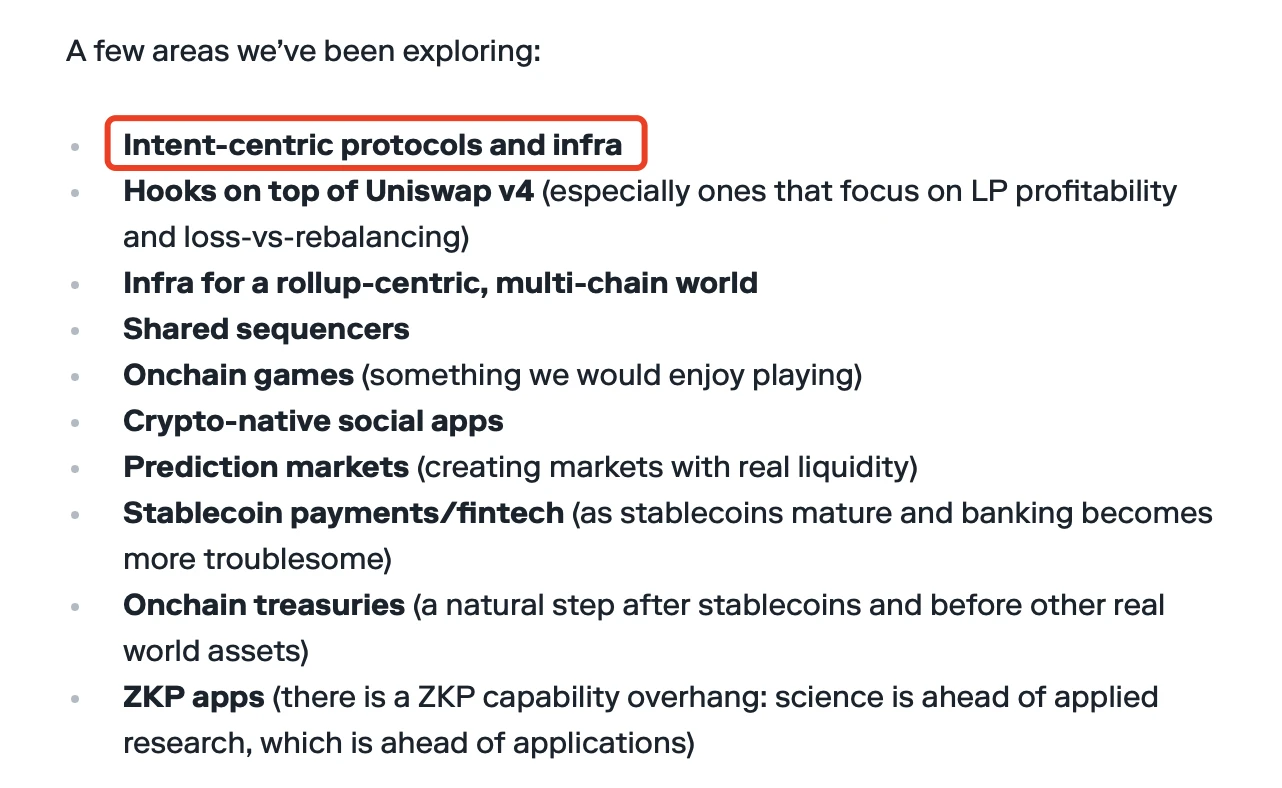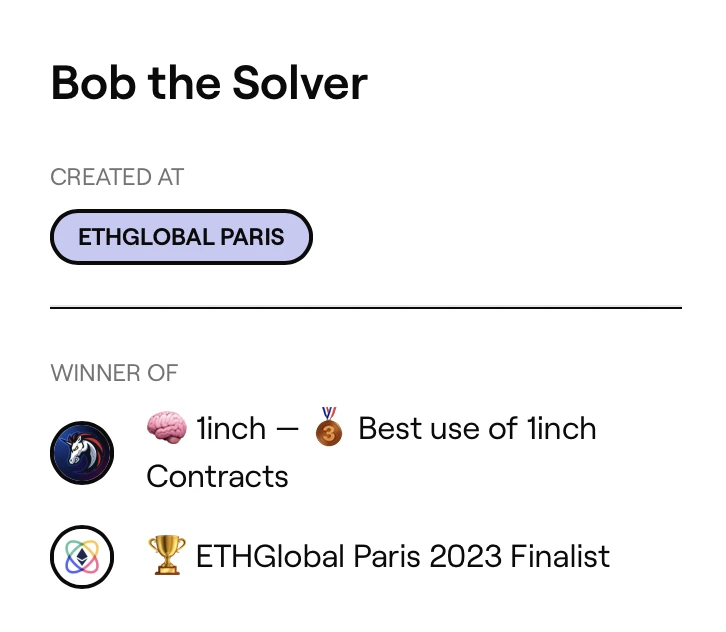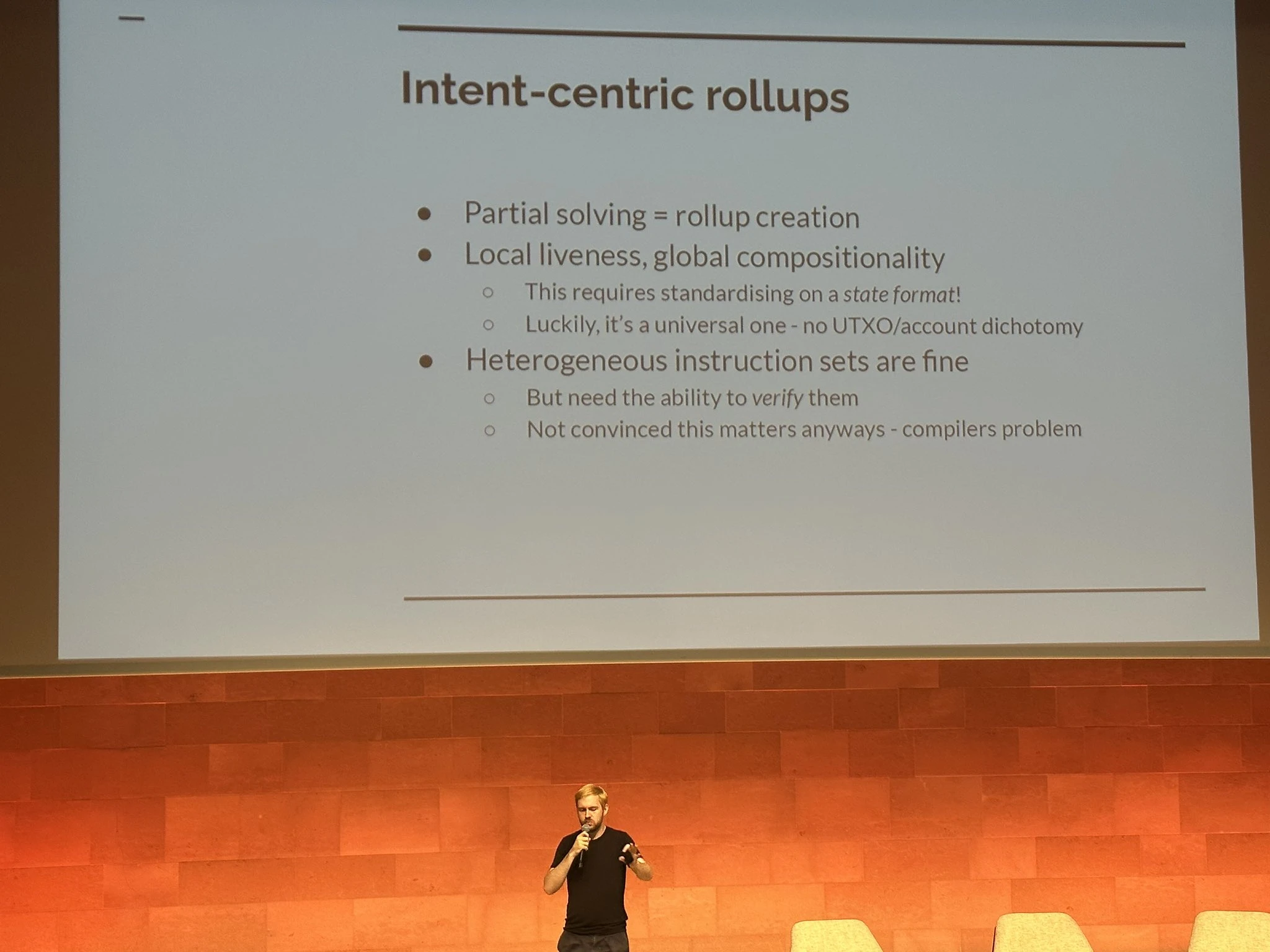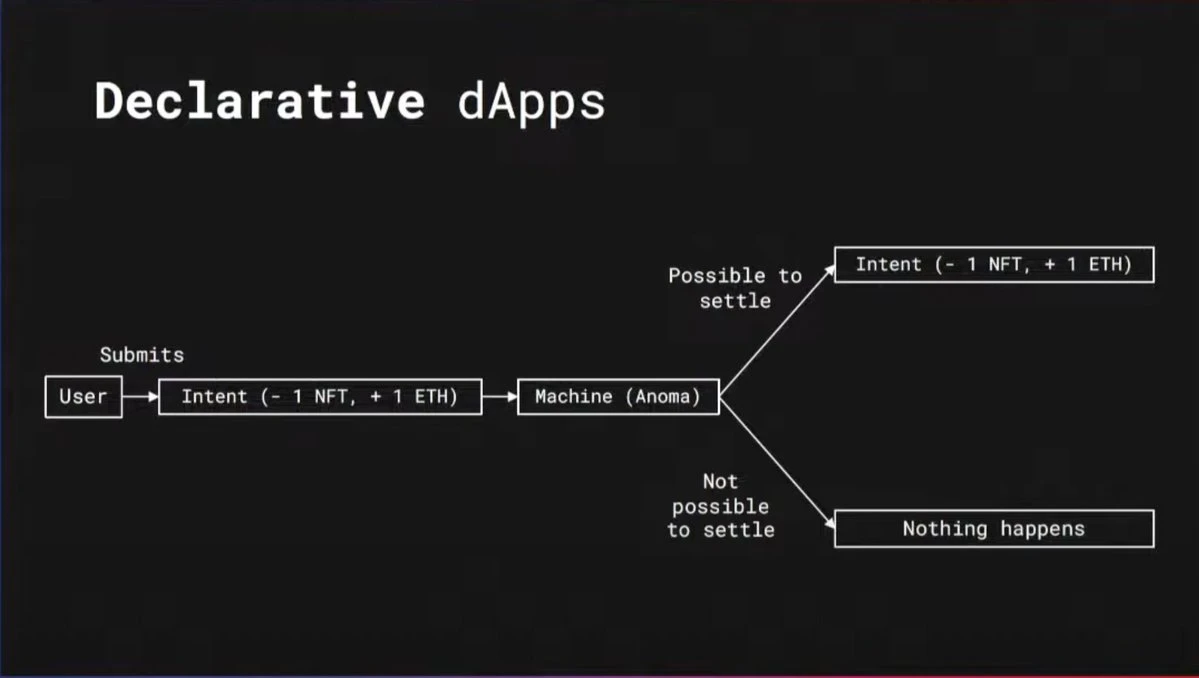LianGuairadigm proposes ten potential trends, and intent-centric ranks first. What is intent-centric?
LianGuairadigm proposes ten potential trends, with intent-centric ranking first. What is intent-centric?Original Text: “LianGuairadigm’s top focus, what is “intent-centric”? “
Author: Azuma
On the evening of July 25th, top crypto venture capital firm LianGuairadigm published an article titled “Collaborate with LianGuairadigm” on its official website.
In the article, LianGuairadigm introduces ten potential trends in the crypto field that the organization is currently paying special attention to, with the first one being “intent-centric protocols and infrastructure.”
- Web3 Mobile Review Can the encryption industry usher in an iPhone moment?
- Another example of a flash loan attack, analysis of the LianGuailmswap security incident
- Comparative Study Differences and Similarities between ANS and ENS

Regarding “intent-centric,” some readers may still be unfamiliar with this concept, but in fact, it has sparked widespread discussion during the past week’s EthCC and its surrounding events, with some even calling it “the future of Web3.”
At the ETHGlobal LianGuairis hackathon, which concluded on July 23rd, a project called Bob the Solver made it to the final list of finalists with its concrete development of intent-centric, allowing us to get a glimpse of what “intent-centric” really means.

Bob the Solver’s idea stems from the emerging paradigm shift in the domain of account abstraction, with its core focus on not paying attention to the precise “transaction” process but rather on the user’s ultimate “intent.”
In the narrative logic of this project, “intent” represents the desired outcome of the user, while “transaction” includes the precise steps required to achieve that outcome. For example, if a user plans to purchase an NFT on the Polygon network, that is their “intent,” which is simple and easy to understand. However, the corresponding “transaction” may involve a series of complex and time-consuming on-chain operations such as token swapping, cross-chain transactions, and purchasing, which require a certain level of blockchain-related knowledge.
In Bob the Solver’s view, in most cases, users only have a “intent” requirement and do not need the precise details of the “transaction.” Therefore, this project can accept the user’s “intent,” automatically formulate appropriate transactions, and execute them on behalf of the user. Ultimately, Bob the Solver hopes to simplify the entire process of on-chain interaction, allowing more users who are unfamiliar with blockchain to participate in the Web3 wave.
Interestingly, Anoma, which has just completed a $25 million financing round, also frequently spoke about intent-centric at EthCC. The project’s two co-founders, Arian Brink and Christopher Goes, have both given speeches sharing the development status of intent-centric.

Odaily Daily Note: Christopher Goes' speech on intent-centric rollups.
Similar to Bob the Solver, Arian Brink stated in his presentation that Anoma supports an architecture specification centered around “intent.” In this architecture, what users need to initiate is “intent” rather than “transactions.” Specifically, users only need to specify the desired state changes they want to achieve without worrying about the specific execution details.

In Anoma’s view, “intent” can be customized and its content can be complex, thus achieving better expression of user needs and ultimately generating new possibilities for applications.
In addition to Bob the Solver and Anoma, there are also other projects currently being developed around intent-centric, such as Essential, which was just launched on July 18.
Essential’s main focus is to reduce certain exploitative behaviors (such as MEV) in the “transaction” process, in order to return the most ideal “intent” results to users.

In Essential’s view, when a user initiates a “transaction”, every participant in the transaction chain will act in their own interests and profit from it, which reduces the ultimate value received by the user.
Therefore, Essential hopes to build a blockchain system based on “intent” and introduce a role called Solver, which will be responsible for collecting users’ “intent” demands in batches and finding the best solutions, in order to maximize the return of results that align with the “intent” for users.
In summary, there are already many projects being developed around the concept of intent-centric. Although the visions of each project are different (such as Bob the Solver aiming to attract more users, Anoma aiming to help users achieve better expression of needs, and Essential focusing on reducing exploitative behaviors), they all take the same approach of replacing “transactions” with “intent” to completely change the interaction paradigm of the current blockchain ecosystem.
With the call from LianGuairadigm and the influence of the organization in the industry, it is inevitable that more intent-centric projects will emerge in the future. Perhaps this will also be a seed that propels Crypto towards the next peak.
We will continue to update Blocking; if you have any questions or suggestions, please contact us!
Was this article helpful?
93 out of 132 found this helpful
Related articles
- No worries about secure cross-chain transactions? Understanding the xERC20 cross-chain token standard in one article.
- UniswapX Opening the Gateway to Uniswap V4 DeFi Experimental Base
- Twitter renamed X, Musk ignites the X universe! From AI to exploring space, the prototype of a universal app emerges.
- Tokyo and Kyoto, the rising encrypted ‘twin stars
- a16z In-Depth Analysis What New Gameplays Will AI Create?
- Another animal coin gains popularity, this time it’s the real version of the on-chain hamster race Hamsters.gg.
- LianGuai Daily | Google Cloud is planning more Web3-centered products; Celsius reaches a key settlement, customers may receive compensation by the end of this year.





